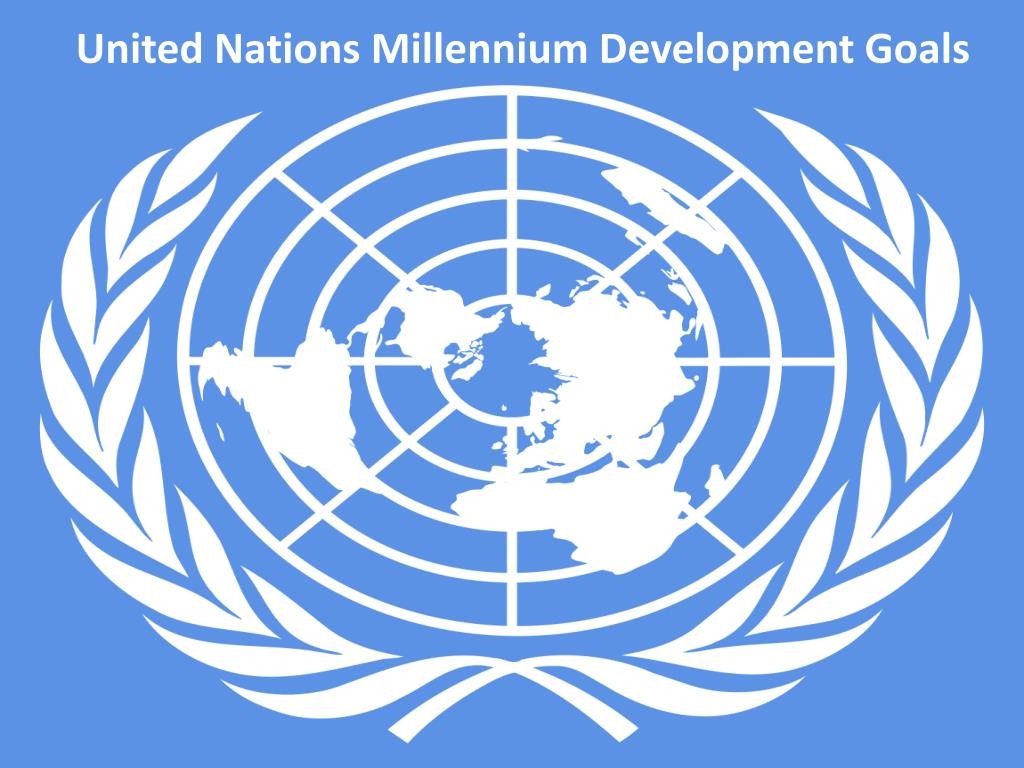
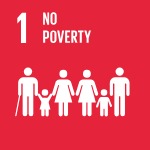
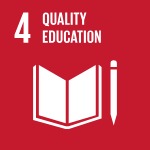
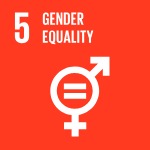
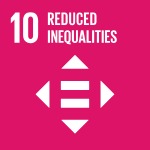
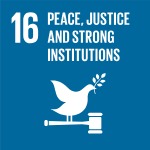
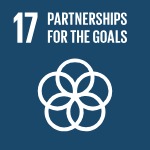
🇦🇫 Afghanistan | 🇧🇩 Bangladesh | 🇧🇹 Bhutan | 🇮🇳 India | 🇲🇻 Maldives | 🇲🇾 Malaysia | 🇲🇲 Myanmar | 🇳🇵 Nepal | 🇵🇰 Pakistan | 🇱🇰 Sri Lanka | 🇺🇸 USA
Hazara Community:
The Hazara community of Afghanistan represents a resilient and distinctive ethnic group facing significant challenges due to their Shia Muslim faith and historical persecution. Comprising approximately 10-15% of Afghanistan’s population, Hazaras have a unique cultural heritage and Asian features that distinguish them within the country. They trace their origins to pre-13th century Afghanistan, with a complex ethnic makeup influenced by Mongol and Turkish ancestries.
Throughout their history, Hazaras have endured discrimination and violence, particularly highlighted in events such as the 1893 massacre and subsequent marginalization under various regimes, including the Taliban. This persecution has limited their access to education and public sector employment, perpetuating their socio-economic disadvantage and contributing to their stigmatization.
In recent decades, many Hazaras have sought refuge abroad, including in the United States, where communities have formed Hazara American Associations to provide support, cultural events, educational scholarships, and essential services. Despite these efforts, Hazaras remaining in Afghanistan continue to face threats to their safety and human rights, particularly from extremist groups.
The Hazara community’s plight underscores ongoing human rights concerns, necessitating international attention and support to safeguard their rights, provide humanitarian aid, and advocate for their inclusion and security within
The Hazara community in Afghanistan faces many challenges, including:
Persecution: The Hazara minority has endured a long history of discrimination and persecution due to their ethnic and religious identity. They are frequently targeted with killings, violence, and bombings aimed at their religious and cultural centers. These attacks have left the community in a constant state of fear and insecurity.
Displacement: Forced displacement has been a recurring issue for the Hazara community, exacerbated under Taliban rule. Many Hazaras have been driven from their homes, seeking refuge in other parts of the country or abroad, often in dire conditions.
Economic Restrictions: The Hazara regions are subject to deliberate economic restrictions, contributing to poverty and underdevelopment. Seizure of agricultural land and pastures by Taliban supporters further impoverishes the community, limiting their access to vital resources.
Marginalization: Hazara-majority areas are often neglected in terms of infrastructure and basic services, leading to low literacy rates and poor access to education, healthcare, and economic opportunities. This marginalization is especially severe for women, who face additional barriers to their rights and freedoms.
Human Rights Violations: Hazara women and girls are particularly vulnerable, facing harassment, arbitrary arrest, rape, and torture. Journalists and activists within the community are censored and punished more harshly, reflecting the broader repression faced by the Hazaras.
Afghan society.
Hindu
Population : around 3000
Polusha temple Bhima Devi (Durga) and temple of Maheshvera
Sakawand Temple dedicated to Surya
Asamai Temple The Asamai temple is at the foothills of the central Kabul hill Koh-e Asamai
Bhairo Temple: Shor Bazaar
Afghanistani Hindus are a resilient community facing significant challenges in their homeland. With a population of approximately 50,000, they have historically contributed to Afghanistan’s cultural diversity and economic fabric. However, escalating conflict and religious persecution have posed severe threats to their safety and rights.
The Hindu population in Afghanistan faces numerous challenges, including discrimination, threats of violence, and limited access to basic services such as education and healthcare. Forced conversions and targeted attacks on their places of worship further exacerbate their plight. In recent years, many Afghanistani Hindus have sought refuge in neighboring countries or beyond, including the United States, in search of safety and religious freedom.
As a USA-based human rights organization, our mission is to advocate for the protection and rights of Afghanistani Hindus, raising awareness of their struggles and supporting initiatives that promote their safety, dignity, and access to essential services. We work tirelessly to ensure that their voices are heard and their rights upheld in the face of adversity.
Ethnic minority of Afghanistan
Pashtuns of Afghanistan
Afghanistan’s largest ethnic group is Pashtun. The 1996 Library of Congress Country Studies estimate put Pashtuns at 40% of Afghanistan’s population, but other estimates from the 2000s put them at 60%. Recent projections range from 42% in 2013 to 52.4% in 2023.The majority of Pashtuns are Sunni. After the Hotaki dynasty in 1709 and the Durrani Empire in 1747, Pashtuns settled in Afghanistan and Pakistan.
Historians and Pashtuns disagree on their origin. A number of ancient communities with Pukhtun-sounding names have been proposed as Pashtun forefathers. According to Herodotus, Pactyans lived in Achaemenid Arachosia Satrap in the 1st millennium BC. They are now called “Afghan” after the 3rd century AD, a moniker given to them by nearby Persians. Avagana, a Prakrit ethnonomy from the 6th century CE, may have inspired ethnic Afghanism.[6] The mythical ancestor “Afghana” was said to be King Saul of Israel’s grandson.
Challenges:
Afghanistan’s Pashtun minority suffers numerous major difficulties that affect their life and the country’s sociopolitical situation. The top five issues are:
Pashtuns are the largest ethnic group, although they regularly clash with Tajiks, Hazaras, and Uzbeks. Historical grudges, resource competitiveness, and political power struggles exacerbate these tensions, causing violence and distrust.
Political instability and conflict: The Taliban’s stronghold in the south and east of Afghanistan disproportionately impacts Pashtun regions. Pashtun communities struggle to flourish because to persistent violence, relocation, and economic hardship.
Many Pashtuns have fled their lands, either internally or as refugees in Pakistan and Iran, due to decades of violence. They lost property, jobs, and identity due to displacement.
Taliban Influence and Extremism: The Taliban, mostly Pashtuns, has impacted the Pashtun community. Some Pashtuns embrace the Taliban, but many others suffer under its stringent interpretation of Islamic law, which restricts daily life, especially for women and minorities
Bangladeshi Hindu Community Profile
Hinduism is the second-largest religion in Bangladesh, with approximately 13.1 million adherents, making up 7.95% of the population, according to the 2022 Census. Bangladesh ranks as the third-largest Hindu-populated country globally, following India and Nepal. Although Hinduism is the second-largest religion in 61 out of 64 districts, there are no Hindu-majority districts in the country.
Bangladeshi Hinduism is culturally aligned with the practices in West Bengal, India, reflecting their shared history before the 1947 partition. The vast majority of Bangladeshi Hindus are Bengali, with Devi (Goddess), particularly Durga and Kali, being widely revered. Shiva worship is more common among higher castes, while Vishnu worship, often through incarnations like Rama or Krishna, transcends caste barriers, emphasizing spiritual unity.
The religious practices of Bangladeshi Hindus include ritual bathing, vows, and pilgrimages to sacred sites. Durga Puja, celebrated in September-October, is the most significant festival, with thousands of pandals (mandaps) erected nationwide. Other major festivals include Kali Puja, Janmashtami, Holi, and Rathayatra.
The principle of ahimsa, or non-violence, influences dietary practices, with many Bangladeshi Hindus abstaining from beef. While not all are vegetarians, those who abstain from meat are considered to observe a “higher” virtue. Brahmins in Bangladesh, similar to those in West Bengal, consume fish and chicken, which distinguishes them from Brahmins in other parts of South Asia.
In response to attacks on Hindu temples and communities, the Bangladeshi government reaffirmed its commitment to protecting the Hindu minority in October 2022. Despite challenges, the Bangladeshi Hindu community continues to uphold its rich cultural and religious heritage.
Buddhist community of Bangladesh
The Buddhist community in Bangladesh holds a significant place in the country’s religious and cultural tapestry. With approximately 1 million adherents, primarily following the Theravada school of Buddhism, they represent about 0.63% of the population. Historically, Bangladesh was a hub of Buddhist civilization, influencing architectural marvels like Cambodia’s Angkor Wat and Indonesia’s Borobudur. Today, most Bangladeshi Buddhists reside in the Chittagong division, especially in the Chittagong Hill Tracts, where indigenous tribes such as the Chakma, Marma, and Mru have practiced Buddhism for centuries. Their spiritual practices often blend Buddhist teachings with ancient animistic beliefs, celebrated notably during Buddha Purnima.
Despite their rich cultural heritage, Bangladesh’s Buddhist communities, particularly those in the Chittagong Hill Tracts, have faced challenges. They have encountered social, economic, and political marginalization, along with displacement and land confiscation. The signing of the 1997 CHT Peace Accord aimed to address these issues, yet its full implementation remains a point of contention. Efforts to safeguard their cultural and religious identities continue amidst ongoing calls for international recognition and support.
Christian community in Bangladesh
The Christian community in Bangladesh, though a small minority, plays a vital role in the country’s social fabric. Comprising approximately 0.3% of the population (around 500,000 people), Christians have a historical presence dating back to the arrival of Portuguese missionaries in the early 16th century. The community is largely concentrated in urban areas such as Dhaka, Chittagong, and Barisal.
Christianity in Bangladesh encompasses Roman Catholics, Protestants, and other denominations. Over the years, Christians have significantly contributed to education and healthcare, establishing around 1,000 schools and 100 healthcare centers nationwide. Despite their positive contributions, the community faces challenges, including discrimination and occasional violence from radical groups.
In recent years, religious freedom has been under threat, with incidents of church destruction and attacks on Christians, pushing Bangladesh higher on the World Watch List of Christian persecution. Nevertheless, the Christian community remains resilient, continuing to practice their faith and serve the broader society, often in the face of adversity.
Ethnic Minority of Bangladesh
Bangladesh is home to a diverse array of ethnic minority communities, encompassing indigenous groups, religious minorities, and other distinct ethnicities.
Among the indigenous populations, the largest group is the Tibeto-Burman Chakmas, who speak the Chakma language. Other notable indigenous communities include the Austroasiatic Santhals, the Marma, and the Garo.
Religious minorities are also significant, with the Bengali Hindu population comprising 7.95% of the national population as of 2022. The Ahmadiyya Muslim community, numbering around 100,000, and smaller groups such as Shi’a Muslims, Bahá’ís, and Christians also contribute to the country’s religious diversity.
Additionally, other ethnic groups include the Biharis, who number approximately 300,000, and the Monipuri, who represent about 0.1% of the population.
According to a 2021 report by the IRI, plainland ethnic communities in Bangladesh experience discrimination, social exclusion, and inadequate living conditions, while also grappling with issues of political underrepresentation and concerns about land preservation.
Indigenous community in Bangladesh and their challenges
The condition of Indigenous Peoples in Bangladesh exemplifies a wider struggle encountered by Indigenous communities throughout Asia. They face significant militarization, are stigmatized as unpatriotic for advocating for their rights, and are frequently excluded from decision-making processes, especially concerning industrial developments on their ancestral lands. These lands are not only essential for their sustenance but also constitute a significant aspect of their cultural heritage. The swift acquisition of these territories leads to the degradation of their cultural heritage and traditional way of living. Indigenous women face heightened vulnerability, as rape is systematically employed as a means of oppression. Notwithstanding these formidable challenges, Indigenous communities persist in their resistance, solidarity, and advocacy for their rights.
During discussion Indigenous Peoples from three distinct communities in order to gain a deeper understanding of the challenges they face. Upon departing from the vibrant metropolis, the scenery underwent a metamorphosis, blending elements of lush vegetation with signs of industrial progress. One side of the road featured a picturesque scenery with paddy fields, palm trees, and houses scattered across the landscape. In contrast, the other side was dominated by factories and chimneys that emitted smoke and dust.
Three decades ago, the entire land was owned by the Barman community. Nevertheless, throughout the years, their territory has been methodically expropriated in the pursuit of industrialization and progress. The community, formerly self-reliant agriculturalists, has been compelled to become laborers in the factories that have encroached upon their land. The Barman people, who are now a marginalized religious and ethnic group, find themselves encircled by the dominant Muslim Bengali population, resulting in a decline in their political influence.
With the expansion of industries, the Indigenous population gradually became a minority within their own ancestral lands. They not only relinquished their political authority, but also their capacity to oppose. Incidents of violence and land seizures perpetrated by Muslim Bengalis have witnessed a steady rise, resulting in the displacement of numerous families who now live in fear and are reluctant to go back to their homes.
Their land being confiscated, numerous individuals were forced into the forests, where they lack legal ownership and are prohibited from residing, despite having no alternative options. Notwithstanding these difficulties, the community persists in resisting. Following an extended legal dispute, a family successfully regained ownership of four acres of their ancestral land that had been seized against their will four decades ago.
Around 80% of the Indigenous population in Bangladesh resides in the flatland plains of the north and southeast, while the remaining population lives in the Chittagong Hill Tracts (CHT). The difficulties encountered by Indigenous Peoples in the plains and the Chittagong Hill Tracts (CHT) vary, particularly about governmental policies, militarization, and social discrimination. Indigenous Peoples in Bangladesh are typically more marginalized and impoverished than the rest of the population.
Despite the formidable obstacles, the tenacity of these communities is evident as they persist, mobilize, and assert their rights during adversity.
The poverty rate is higher than the national average (65% in CHT; over 80% in the plains).
The Christian community in Bhutan is a small minority, with estimates suggesting a population of around 10,000 to 15,000 people, though exact numbers are difficult to determine due to the lack of official recognition and the sensitive nature of religious identification. Christians are scattered across the country, with small groups in urban centers like Thimphu, Paro, and Phuentsholing, as well as in rural areas.
There are no officially recognized churches in Bhutan. Christians often meet in private homes for worship, as public Christian religious activities are not permitted. This lack of formal places of worship reflects the broader challenges faced by the community.
The top three issues facing the Christian community in Bhutan include:
1.Lack of Religious Freedom: Christianity is not officially recognized, and Christians face restrictions on practicing their faith, including the inability to build churches or openly worship.
Introduction
India’s population is diverse and extensive, as evidenced by the 2021 census, reflecting its rich cultural and religious heritage. The country, which has a population exceeding 1.3 billion, is predominantly Hindu, with 966.2 million adherents, which accounts for 79.8% of the population. With 172.2 million adherents (14.2%), Islam is the second-largest religion. Sikhism and Christianity also have substantial populations, with 20.8 million (1.7%) and 27.8 million (2.3%) adherents, respectively. Buddhism and Jainism, which originated in India, have 8.4 million (0.7%) and 4.5 million (0.4%) adherents, respectively. Zoroastrians (57,300) and Jews (approximately 4,000) are among the smaller religious communities.
The demographic landscape of India is also characterized by substantial indigenous and minority populations. The population is composed of 16.6% Scheduled Castes, also known as Dalits, and 8.6% Scheduled Tribes, or Adivasis. These historically marginalized groups continue to encounter obstacles in their pursuit of social equity.
The Anglo-Indians, who are estimated to number 125,000, and the Andaman Islanders are among the minor communities that contribute to the country’s cultural fiber. The Adivasis, who are dispersed throughout India, are notably prevalent in the northeastern states. They possess unique cultural identities and varying degrees of autonomy under the Constitution. The brutality of the Mughals and Portuguese invaders on the Indian people has had an enormous influence on Indian culture and belief.
The religious plurality of India is not the only factor contributing to its demographic diversity; it is also a reflection of its intricate social structures. The caste system, which is notably rigorous in Hindu society, continues to be a significant factor in social stratification and identity. India is a nation of minorities, with each community contributing to the country’s unique and multifaceted identity, despite the fact that the majority of the population practices Hinduism.
Minoritiy Community
Religious minority communities in India have historically contributed to the nation’s cultural and spiritual diversity. Despite their rich heritage, these groups have faced significant challenges over time, often rooted in the socio-political dynamics of the country.
Muslims, who constitute the largest religious minority in India, make up approximately 14.2% of the population, according to the 2011 Census. Historically, regions like Uttar Pradesh, West Bengal, and Kerala have had significant Muslim populations. However, the community has faced communal violence, notably during the partition of India in 1947 and more recently in events like the Gujarat riots of 2002.
Christians, forming about 2.3% of the population, are concentrated in states like Kerala, Goa, and the northeastern regions of Nagaland and Mizoram. The arrival of Christianity in India dates back to 52 AD with St. Thomas in Kerala, yet, the community has occasionally faced persecution, such as the anti-Christian violence in Odisha in 2008.
Sikhs, predominantly residing in Punjab, represent about 1.7% of the population. The community has faced significant challenges, especially during the anti-Sikh riots in Delhi in 1984 following the assassination of Prime Minister Indira Gandhi.
Jains and Buddhists, making up 0.4% and 0.7% of the population respectively, are significant in states like Maharashtra and Karnataka. These communities, though smaller in number, have had a profound impact on India’s religious landscape, with historical figures like Mahavira and Gautama Buddha originating from India.
Despite constitutional protections, these religious minorities continue to navigate a complex socio-political environment, striving for equality, justice, and recognition in a predominantly Hindu-majority nation. Their historical and contemporary experiences underscore the ongoing challenges of maintaining religious pluralism in India.
Indigenous community in India
The term “Scheduled Tribes” describes a collection of 705 distinct ethnic groups in India. Adivasis, meaning “Indigenous Peoples,” is the common name for India’s Scheduled Tribes in the country’s core region. They make up 8.6% of the entire population, or around 104 million people. The actual number of Scheduled Tribes is lower than the official amount since many more ethnic groups are not formally recognized even though they qualify for Scheduled Tribe status.
The areas of northeastern India, specifically the seven states, and the “central tribal belt” that stretches from West Bengal to Rajasthan are home to the greatest number of Indigenous Peoples. A number of constitutional provisions and statutes in India acknowledge the right to self-governance and land ownership by Indigenous Peoples. One such provision is the Fifth Schedule, which applies to central India, and another is the Sixth Schedule, which applies to parts of northeastern India. Laws passed to safeguard Indigenous communities are woefully inadequate and are seldom put into practice in a suitable manner.
In recent announcements, such as the formation of a High-Level Committee to investigate the “social, economic, cultural and linguistic issues of the Indigenous population in the State of Tripura” or the rationale for the Citizenship Amendment Bill, the phrase “Indigenous populations” has been used more and more frequently by the Indian government. Every year on August 9, Jharkhand’s government has proclaimed the International Day of the World’s Indigenous Peoples as a state holiday.
Top 7 Issues Facing Indigenous Communities in India
Naga Community India
The Naga community in India represents a distinctive ethnic group inhabiting the remote and mountainous terrain between the states of Assam and Burma, with significant populations in Nagaland, Manipur, and Arunachal Pradesh. Comprising approximately 2.5 million people, Nagas are organized into sixteen major tribes, each with its own language and cultural identity, yet unified by a strong sense of national identity forged during British colonial rule and subsequent resistance to Indian governance.
Traditionally, Nagas are known for their tribal organization and warrior traditions, historically defending their hilltop villages through armed resistance against plains-dwelling communities. The introduction of Christianity by missionaries facilitated literacy and English language adoption, reinforcing a distinct Naga identity.
Since British colonial times, Nagas have sought self-determination, initially petitioning for independent statehood before India’s independence. Efforts intensified post-independence, leading to conflict with the Indian government and the formation of the Naga National Council (NNC) advocating for independence. Despite a 1958 agreement recognizing Nagas’ right to autonomy, subsequent tensions led to armed conflict, resulting in significant casualties and allegations of human rights abuses.
The 1975 Shillong Accord temporarily halted hostilities but failed to achieve lasting peace as factions within the Naga movement splintered, leading to continued unrest. The National Socialist Council of Nagaland (NSCN) emerged, advocating for greater autonomy and negotiating several ceasefires with the Indian government, albeit with intermittent violence.
In recent decades, negotiations between NSCN factions and the Indian government have aimed at a peaceful resolution, culminating in the 2015 Framework Agreement, signaling potential progress towards reconciliation and political autonomy within the Indian Constitution. However, challenges remain, including the demand for a separate Naga constitution and flag, and the repeal of the Armed Forces Special Powers Act (AFSPA), which provides security forces with legal immunity in conflict zones.
Today, while efforts towards peace continue, the Naga community faces ongoing socio-political challenges, navigating complex negotiations for autonomy while preserving cultural identity and addressing historical grievances. The future of Nagaland and its people hinges on sustained dialogue and inclusive governance that respects and addresses the aspirations of the Naga community within the framework of a unified India
The Maldives, composed of Indo-Aryan, Dravidian, and Arab heritage, maintains a tightly-knit society unified by language and Sunni Islam, adhered to by the majority. A quarter of the populace resides in the compact capital of Male, spanning just two square kilometers. Despite a small Shi’a minority from Indian roots, Hindus and Buddhists exist but lack official acknowledgment. Sharia law, termed Sariatu locally, governs with strict Islamic precepts, defining legal and religious norms.
Following independence in 1965 and republic status in 1968, the president, wields substantial executive control. Political dissent, however, faces severe suppression, with restrictions on party formation and allegations of human rights abuses. Non-Muslims encounter obstacles, including limited worship spaces and import bans on religious artifacts. Though pledges for democratic reforms arose in 2004 amid unrest, progress remains elusive, underscoring ongoing challenges in political liberalization and religious freedoms in the Maldives.
\Challengaes of Religious Minorities In Maldives
For non-Sunni Muslims and religious minorities in the Maldives, the top three issues include:
Religious Discrimination and Lack of Recognition: The Maldives officially recognizes only Sunni Islam, leaving Shi’a Muslims and other religious minorities unrecognized and marginalized. This lack of recognition leads to social and legal discrimination, including restrictions on practicing their faith openly.
Strict Implementation of Sharia Law: The Maldives enforces a strict interpretation of Sharia law (Sariatu), which affects the religious freedoms of non-Sunni Muslims. This can include limitations on religious practices, dress codes, and public expressions of faith that do not align with Sunni interpretations.
Governmental and Social Repression: Non-Sunni Muslims face significant repression, both from the government and within society. This includes potential imprisonment for religious practices deemed contrary to the state’s Sunni Islam policies, lack of places of worship, and social ostracism or persecution for their beliefs.
Minorities in Pakistan Ahmadis, Christians and Hindus claim to have a population of 4 million each. Given the disadvantages and stigmatization, communities do not like to be identified as minorities so these figures may be an underestimate. As well as Ahmadis, Christians and Hindus, there are also Bahais, Kalasha of Chitral, Makani’s in Baluchistan, Parsis, Sikhs and Zikri’s. Zikri’s identify themselves as Muslims but there are demands for them to be declared non-Muslim.
The Sunnis are the majority in Pakistan; Shia Muslims are estimated to be between 15 and 20 per cent of thepopulation. In the 1980s, militant Sunni and Shia groups emerged and the North West Frontier Province became their battleground. These militant groups want to transform the Pakistani state in accordance with their own sectarian visions.
Sri Lanka’s religious minorities, as recorded in the 2012 census, comprise Hindus, Muslims, and Christians.
Hindus constitute 12.6% of the population and are predominantly concentrated in the northern region of the country. The Sri Lankan Tamils, who constitute the second largest ethnic group, are predominantly adherents of Hinduism, with a notable Christian minority.
The Muslim population constitutes 9.7% of the total population and is predominantly Sunni. The Muslim population is primarily concentrated in the eastern region of the country, specifically in the Eastern Province, where they constitute the largest ethnic or religious group. They are also present in significant quantities in the Central, North-Central, North-Western, Sabaragamuwa, Uva, and Western Provinces.
Christians constitute 7.4% of the population and are predominantly adherents of the Roman Catholic faith. The Christian population in the country is primarily located in the western region. This includes various denominations such as the Church of Ceylon (Anglican), the Dutch Reformed Church, Methodists, Baptists, the Assembly of God, Pentecostals, The Church of Jesus Christ of Latter-day Saints, and Jehovah’s Witnesses. The population of Christian evangelical and nondenominational Protestant groups has experienced recent growth, although accurate figures regarding their size are not available.
In Sri Lanka, the constitution ensures religious freedom and equality for all citizens. However, Buddhism holds the status of the state religion and is granted certain advantages, such as the government’s responsibility to safeguard and advance Buddhist Dharma. The USCIRF’s 2023 report highlighted that the Sri Lankan government has specifically aimed at curtailing the rights of religious minorities, specifically Muslims and Hindus, by means of legislation, discriminatory practices, and disputes over land ownership.
Ethnic Minority group Sri Lanka
The 2012 census found 2,270,924 Sri Lankan Tamils, 11.2% of the population. Their ethnicity is a minority in Sri Lanka.
The Tamil community in Sri Lanka confronts a myriad of pressing challenges, encompassing human rights violations, economic disparity, and ongoing land grievances.
In terms of human rights, the government’s persistent denial of war crimes, crimes against humanity, and genocide has exacerbated tensions and hindered reconciliation efforts. Reports from witnesses detail harrowing accounts of rape and torture by law enforcement personnel, while a United Nations panel concluded that tens of thousands of Tamil civilians perished due to Sri Lankan military actions within designated “no-fire zones.” Alarming statistics underscore Sri Lanka’s standing as the second highest country globally for enforced disappearances, as highlighted by the UN Working Group on Enforced Disappearances in 2020.
Economically, the 2022 financial crisis has disproportionately affected Tamil-speaking regions, exacerbating poverty and impeding economic development initiatives. Concurrently, Tamils have experienced widespread displacement from their ancestral lands due to encroachments by government agencies, Buddhist clergy, and the military, among others.
Further compounding these challenges are issues such as the marginalization of Tamil language rights, initiated notably by the 1956 legislation recognizing Sinhala as the sole official language to the exclusion of Tamil. Tamils continue to advocate for equitable opportunities in governmental employment and educational institutions. Additionally, there remains an unresolved demand for provincial autonomy in regions with significant Tamil populations, as promised by the 13th Amendment of the Sri Lankan Constitution arising from the Indo-Lanka Accord of 1987, which pledges decentralization of authority to provincial councils—an aspiration yet to be fully realized amid successive administrations’ hesitancy.
These multifaceted issues underscore the complex socio-political landscape within which the Tamil community in Sri Lanka persists in seeking meaningful redress and equitable inclusion.
Bhutan’s ethnic and religious variety remains despite its small population. Bhutan is mostly Buddhist, although its ethnic and religious minorities contribute to its culture.
Minorities: Bhutan’s main ethnic groups include Ngalops, Sharchops, and Lhotshampas. The largest ethnic minority is the Nepali Lhotshampas, who live in southern regions including Samtse, Sarpang, and Chirang. They are mostly Hindus and greatly influenced by Nepali culture. Language, music, dancing, and religion help the Lhotshampa people sustain their culture despite 1990s forced relocations.
Hinduism is Bhutan’s second-largest religion, followed by Lhotshampa. Small Christian and Muslim populations also enrich Bhutan’s religious variety.
Minority cultures in Bhutan are dynamic and diversified. Southern Hindus celebrate Dashain, Tihar, and Holi with gusto. Rituals, traditional music, and dancing represent the community’s spirituality at these celebrations.
Although a minority, these ethnic and religious groups contribute to Bhutan’s unique heterogeneous history by shaping its social and cultural dynamics.
Bhutan
Bhutan’s ethnic and religious variety remains despite its small population. Bhutan is mostly Buddhist, although its ethnic and religious minorities contribute to its culture.
Minorities: Bhutan’s main ethnic groups include Ngalops, Sharchops, and Lhotshampas. The largest ethnic minority is the Nepali Lhotshampas, who live in southern regions including Samtse, Sarpang, and Chirang. They are mostly Hindus and greatly influenced by Nepali culture. Language, music, dancing, and religion help the Lhotshampa people sustain their culture despite 1990s forced relocations.
Hinduism is Bhutan’s second-largest religion, followed by Lhotshampa. Small Christian and Muslim populations also enrich Bhutan’s religious variety.
Minority cultures in Bhutan are dynamic and diversified. Southern Hindus celebrate Dashain, Tihar, and Holi with gusto. Rituals, traditional music, and dancing represent the community’s spirituality at these celebrations.
Although a minority, these ethnic and religious groups contribute to Bhutan’s unique heterogeneous history by shaping its social and cultural dynamics
As of 2024, several pressing issues continue to affect religious and ethnic minorities, including the Dalit community, in Nepal:
1.Caste-Based Discrimination and Untouchability**: Despite being outlawed, caste-based discrimination against Dalits remains pervasive, particularly in rural areas. Dalits face social ostracization, exclusion from public spaces, and denial of services, perpetuating their economic and social marginalization.
2.Ethnic and Religious Persecution**: Ethnic and religious minorities, including Muslims, Christians, and indigenous groups, experience persecution by the dominant Hindu majority. This includes societal discrimination, restricted access to resources, and harassment, often justified under the guise of nationalism or social cohesion.
3.Lack of Political Representation**: Marginalized communities, including Dalits, Madhesis, and indigenous peoples, are underrepresented in Nepal’s political, civil service, and decision-making bodies. Despite affirmative action policies, the dominant groups (Brahmins and Chhettris) still hold disproportionate power, limiting minority voices.
5.Gender-Based Violence and Discrimination**: Women and girls from minority and Dalit communities suffer from multiple layers of discrimination. They are often victims of gender-based violence, trafficking, and exploitation, with limited access to justice and protection, exacerbated by their marginalized status.
These issues highlight the systemic challenges that Nepal’s religious, ethnic, and Dalit communities face, requiring sustained efforts for meaningful inclusion and equality.